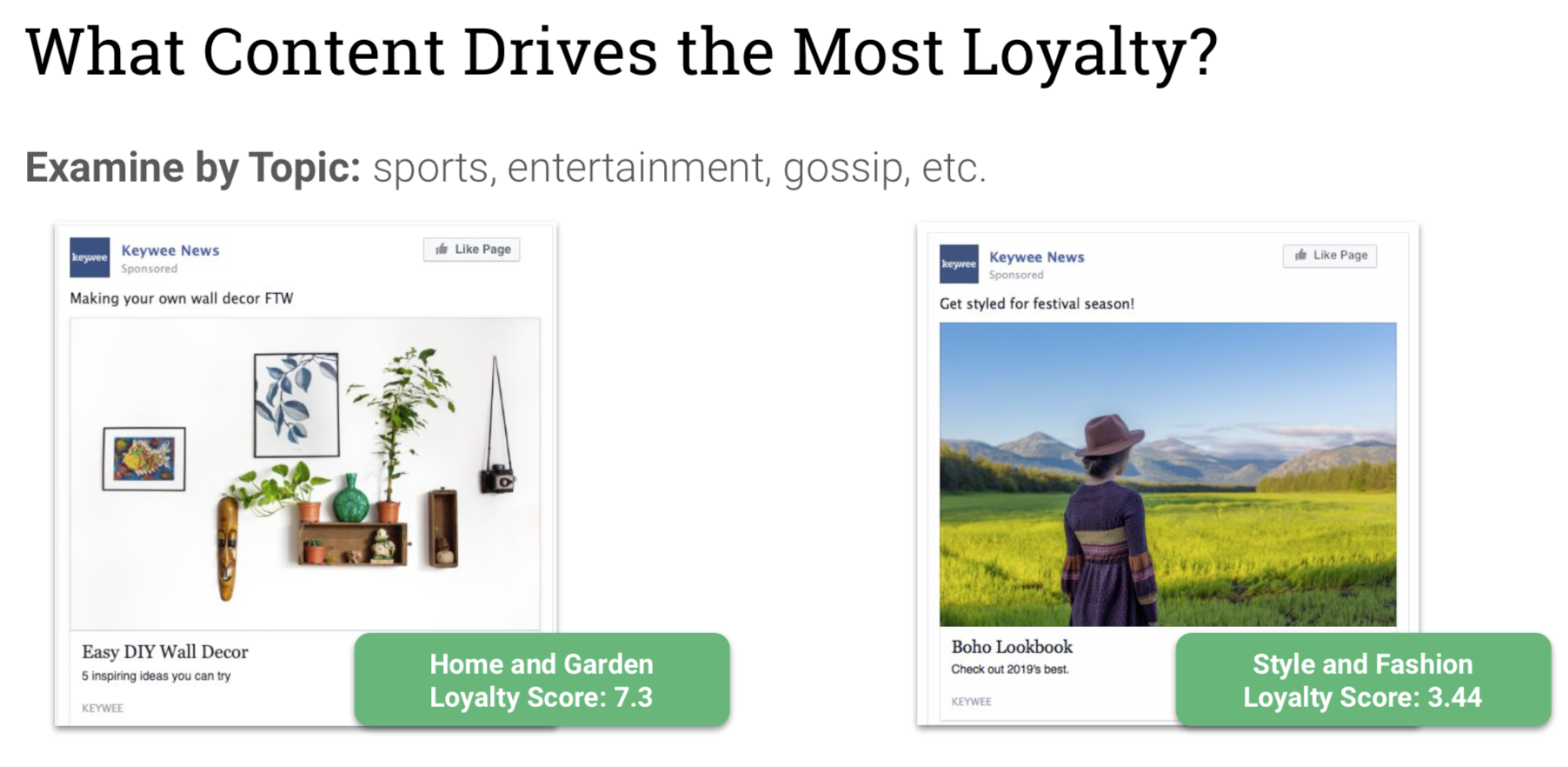If you’ve ever run an audience development campaign, you’ve probably struggled with the timeless dilemma of weighing quantity vs. quality. And on the surface, it makes sense to take the quantity route — the goal of most of these efforts is to bring in the most users possible at the lowest possible price.
This method is problematic, to say the least: It leads to fly-by-night users, and it offers very few levers to pull when it comes to optimizing and scaling these types of campaigns.
Here at Keywee, having seen these problems emerge time and time again, we set out to solve for them. How can we help audience development campaigns become more qualitative? How can we create more growth opportunities for our customers?
This was no small challenge. Whereas performance campaigns have easily identifiable actions, audience development doesn’t have anything that’s as clear-cut. You can’t simply place a pixel, define a thank you page, and head off to the races. Google Analytics metrics like time on site, pages per session, or bounce rate may give you a good snapshot of single sessions or traffic sources, but that doesn’t help you with the big picture: finding loyal users.
Enter Loyalty Score
We’ve developed a clear and concise metric that measures a user’s loyalty over time, giving a clear, qualitative, and quantifiable metric to optimize against.
A story’s Loyalty Score is a combination of user visits and page views, measured from a first campaign click, over the course of 28 days.
It’s clear that 1 + 1 = 2. But adding together those metrics, measuring them over a significant period of time across your audiences, can give you a clear and concise picture of how users are interacting with your content.
Put simply: You can easily compare two stories, see which campaign has a higher loyalty score, and allocate your budget in a way that accounts for user quality, and not just quantity alone.
Your Biggest Competitor is You
When sharing the new Keywee dashboard with our beta customers, one of the first questions that we are always asked is, “What counts as a good Loyalty Score?”
Our answer? There is no ideal Loyalty Score. Every publisher’s site has its own user experience and design, and we’ve found that factors like infinite scroll, photo gallery formats, and content recommendation widgets can have a significant impact the numbers. At the end of the day, one publisher’s Loyalty Score of 1.5 could be another’s 5.3.
That said, content type is also a huge factor that can affect a story’s Loyalty Score. A news provider will probably have fewer page views overall because news content is usually consumed in small bursts over the course of a day. A fashion site will probably have fewer visits overall, but more page views because users may visit it when they have more leisure time to consume the content.
To optimize for the highest possible score, you simply look at your own data and work to improve on it.
Endless Potential
The exciting thing about the Loyalty Score metric is that it unlocks fantastic opportunities to optimize beyond CTR and CPC. It’s an anchor from which you can optimize and expand. You can use it to create lookalike audiences, discover the content that keeps users coming back for more, retarget user bases with high scores who will help you achieve high-value business goals, and much, much more.
Interested in learning more? We recently hosted a webinar where we took a deep dive into what goes into the Loyalty Score metric, along with various optimization opportunities and interesting trends that we’ve seen improve reader loyalty.
Fill out the form below to begin watching the webinar:
—
At Keywee, we make stories relevant and powerful for the world’s best storytellers — like The New York Times, The BBC, National Geographic, Forbes, and Red Bull.
Today, people aren’t coming to websites to search for content — stories find their audiences in feeds and apps. The upshot? Distribution is now the key for effective storytelling. Keywee’s platform unlocks audience insights using AI and data science, and infuses them into every step of the storytelling process: from topic selection, to story creation, to distribution and optimization.
Keywee is backed by leading investors such as Google’s Eric Schmidt and The New York Times, and has been a fast-growing, profitable startup since its inception. To learn more, request a demo here.



